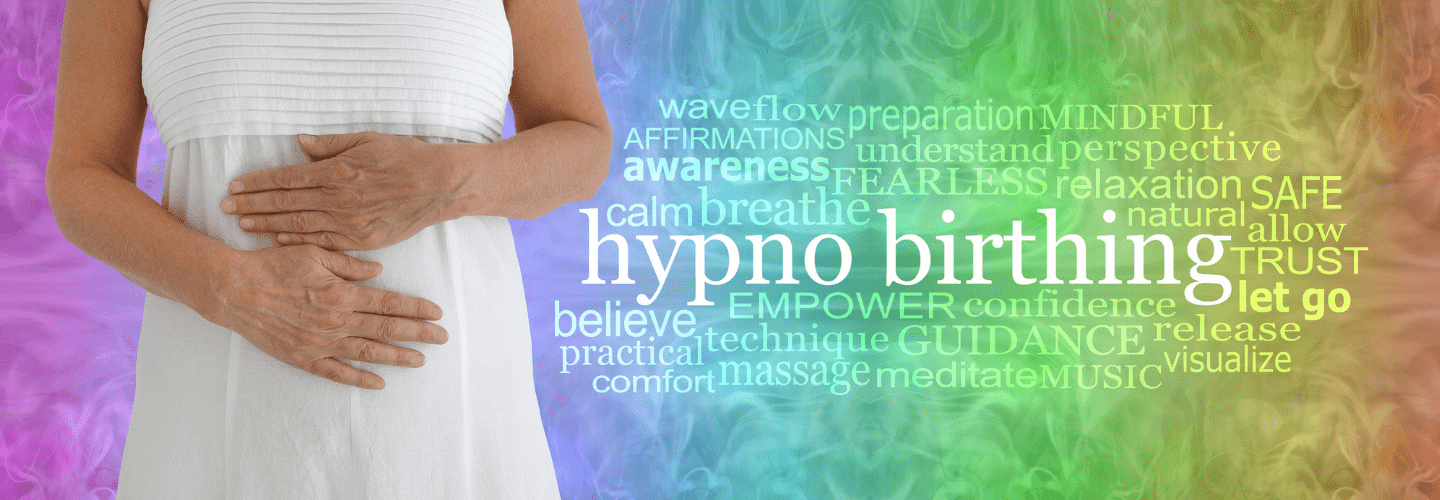
In the domain of childbirth, the concept of Hypnobirthing has gained momentum for its emphasis on a serene and mindful approach to labor. As expectant mothers seek ways to navigate this transformative experience with calmness and empowerment, incorporating the seven best Hypnobirthing techniques becomes crucial. From trusting in the body's wisdom to creating a tranquil birthing space, each technique plays an essential role in fostering relaxation and confidence during labor. But how exactly do these techniques work together to create a harmonious birthing journey? Let's explore further into the depths of these methods and uncover the secrets to a calm and positive birth experience.
Trust in Your Body
Trusting in the innate wisdom of your body during labor is a foundational aspect of hypnobirthing techniques, essential for reducing fear and anxiety while promoting a calm and empowered birthing experience. Research has shown that building trust in your body's birthing capabilities can greatly enhance the overall birthing journey, leading to a more positive birth experience. By embracing hypnobirthing techniques, such as visualization and positive affirmations, you can replace doubts with trust in your body's natural birthing wisdom.
When you trust your body's instincts, you are better equipped to stay calm, focused, and confident throughout labor. Cultivating this trust is key to overcoming the challenges of childbirth with a sense of empowerment. Hypnobirthing emphasizes the importance of building trust in your body, recognizing its innate birthing capabilities, and harnessing this confidence to create a serene birthing environment. By staying connected to your body and trusting in its ability to birth your baby, you can approach labor with a sense of calm assurance.
Release Body Shame
As you prepare for childbirth, shedding body shame and embracing the natural strength and capabilities of your body is paramount for a positive and empowering birthing experience. Understanding the common nature of body shame in childbirth preparation can help you replace it with positivity and trust in your body's capabilities.
Here are some ways to release body shame and build confidence:
- Learn about the body's natural birthing abilities to appreciate its innate strength.
- Practice gratitude for the female body's incredible capability to give birth.
- Use affirmations to reinforce positive beliefs about your body and its role in childbirth.
- Recognize the power of the female body in the process of childbirth preparation.
- Embrace the positivity that comes from trusting in your body's abilities and letting go of shame.
Avoid Negativity

To foster a serene birthing environment, steering clear of negativity is essential for maintaining a positive mindset and facilitating a smoother labor experience. Negative thoughts and energy can greatly impact a woman's ability to relax and cope with labor pain effectively.
Surrounding oneself with positive influences, such as positive birth stories, can contribute to an empowering and stress-free birth. Hypnobirthing classes teach valuable relaxation techniques, breathing methods, and birth affirmations to counteract the effects of negativity during the birthing process.
By focusing on creating a nurturing and optimistic environment, mothers can promote relaxation, confidence, and trust in their body's natural birthing abilities. Fear and pain are interconnected, making it important to address negativity to achieve a calm birth.
Embracing natural pain relief methods and hypnobirthing pain techniques can further enhance the intrapartum care experience, ensuring a more positive and empowering labor and delivery process.
Self Hypnosis Before Bed
Engage in nightly self-hypnosis sessions to cultivate a state of relaxation and mental preparedness that can positively impact your labor experience. By practicing self-hypnosis before bed, you can focus on positive affirmations, deep breathing, and visualization techniques to train your mind for the calmness needed during labor. Here are some key benefits of incorporating self-hypnosis into your bedtime routine:
- Reduces Stress and Anxiety Levels: Self-hypnosis helps in calming the mind and body, leading to a reduction in stress and anxiety levels.
- Promotes a Restful Night's Sleep: Engaging in self-hypnosis before bed can create a peaceful mindset that promotes a restful night's sleep, essential for overall well-being.
- Enhances Mental Preparedness: Consistent practice of self-hypnosis enhances mental preparedness, helping you feel more confident and in control during labor.
- Improves Emotional Well-being: Self-hypnosis fosters emotional well-being by promoting relaxation and positivity.
- Promotes a Sense of Control: Utilizing self-hypnosis techniques before bedtime empowers you to feel more in control during the childbirth process.
Controlled Breathing During Dilation

Controlled breathing during dilation is a powerful tool for managing labor pain and promoting relaxation. By focusing on proper breathing techniques, mothers-to-be can increase oxygen flow to their muscles, aiding in pain relief and enhancing their sense of control.
Deep, slow breaths during contractions can help reduce tension and anxiety, contributing to a more comfortable birthing experience.
Breathing for Pain Relief
How can controlled breathing techniques during dilation offer a pathway to managing pain and fostering a sense of relaxation and concentration?
Controlled breathing during labor plays an important role in pain management and overall comfort. By engaging in specific breathing exercises, women can enhance relaxation, focus, and stress reduction during contractions.
Here are some key points to contemplate:
- Controlled breathing aids in pain management by promoting relaxation.
- It helps in maintaining focus and concentration during labor.
- Controlled breathing techniques contribute to stress reduction.
- Breathing exercises support coping techniques during the intensity of contractions.
- Consistent practice of controlled breathing can lead to a more comfortable and calm labor experience.
Mind-Body Connection
During the process of dilation, controlled breathing techniques form an essential link between the mind and body, facilitating pain management and relaxation for expectant mothers. By incorporating controlled breathing into their labor experience, women can establish a strong mind-body connection, aiding in coping with labor discomfort.
Deep, slow breathing techniques not only support the body's natural labor process but also help reduce stress hormones and increase oxygen flow to the muscles. This intentional breathing practice during dilation paves the way for a smoother labor journey, offering a calmer experience overall.
Embracing controlled breathing empowers women to navigate the challenges of labor with greater ease and composure, making each contraction a step closer to meeting their newborn.
Relaxation Techniques Recommended
Considering the pivotal role of relaxation in promoting a positive birthing experience, what techniques can be recommended to aid in managing pain and fostering a calm environment during dilation? Controlled breathing during dilation is a fundamental aspect of hypnobirthing techniques and labor pain management. Here are some key points to remember about dilation breathing:
- Deep, slow breathing techniques aid in staying calm and focused during contractions.
- Controlled breathing supports oxygen flow, reducing stress and tension during labor.
- Practicing controlled breathing techniques prepares the body for a smoother birthing experience.
- Incorporating controlled breathing into relaxation methods enhances coping strategies during labor.
J Breathing for Pushing
Effective breathing techniques during the pushing stage of labor are essential for conserving energy and ensuring smooth contractions. By maintaining a steady rhythm and focus, mothers can reduce the risk of hyperventilation and support their pelvic floor muscles.
Deep, controlled exhalations not only aid in the pushing efforts but also promote relaxation and endurance for a more efficient delivery process.
Breath Control Techniques
Utilizing the J Breathing technique during the pushing stage of labor offers a calming and effective method for promoting relaxation and enhancing the birthing experience. This hypnobirthing technique involves controlled exhalations with a 'J' sound, aiding in tension release and efficient pushing.
Here are some key points to contemplate:
- Exhaling with the 'J' sound helps release tension and promotes effective pushing.
- Encourages relaxation and energy conservation during the pushing stage.
- Enhances the mind-body connection, facilitating a calm and focused birthing experience.
- Contributes to a positive birth outcome through improved efficiency in the pushing stage.
- Practicing J Breathing in hypnobirthing can lead to a smoother and more comfortable labor experience.
Pushing With Relaxation
During the pushing stage of labor, employing the J Breathing technique can aid in promoting relaxation and efficient pushing for a smoother birthing experience.
J breathing, a hypnobirthing technique, involves controlled breaths that focus on exhaling with a relaxed jaw to prevent tension and promote effective pushing. This method helps women maintain focus, conserve energy, and work in harmony with their body's natural rhythm during labor.
Create a Calm Environment
To establish a serene birthing environment, careful attention to elements like lighting, music, and scent is essential in promoting relaxation and comfort during labor. Creating a tranquil space can greatly impact the birthing experience, aiding in pain management and overall well-being.
Here are some key factors to keep in mind:
- Soft Furnishings: Incorporating plush cushions, cozy blankets, and supportive pillows can enhance comfort levels and create a soothing atmosphere.
- Water Immersion: Engaging in water immersion through a birthing pool or tub can promote relaxation, reduce stress, and help manage labor pain effectively.
- Temperature Control: Maintaining an ideal temperature in the birthing room is crucial for keeping the mother comfortable throughout the labor process.
- Music Selection: Choosing calming music or sounds can help create a relaxing ambiance, promoting a sense of tranquility and peace.
- Scent Therapy: Using essential oils or scented candles can contribute to a calming environment, triggering relaxation and reducing anxiety levels.
Frequently Asked Questions
How Can I Calm My Pregnant Woman in Labor?
To calm a pregnant woman in labor, utilize breathing exercises, visualization techniques, relaxation methods, massage therapy, positive affirmations, water therapy, varied labor positions, aromatherapy benefits, and guided meditation. Provide continuous support, reassurance, and encouragement.
Maintain a soothing environment with dim lighting, calming music, and familiar scents. Encourage slow, controlled breathing to manage pain and promote relaxation. Use comforting touch, massage, and gentle movements to alleviate tension and create a calm atmosphere.
What Is the Calm Birth Method?
The Calm Birth method is a holistic approach to childbirth that harnesses the mind-body connection to promote a serene birthing experience. By incorporating relaxation techniques, breathing exercises, and visualization skills, it cultivates a positive mindset through affirmations and the power of suggestion.
This method induces a hypnotic state of deep relaxation, enhancing the birth environment. Encouraging a supportive partner and teaching self-hypnosis techniques are integral components of the Calm Birth method.
How Can I Stay Calm During Labour?
Staying composed during labor is essential for a positive birthing experience.
Incorporating breathing exercises, visualization techniques, relaxation music, massage therapy, aromatherapy oils, positive affirmations, gentle movements, a supportive partner, water immersion, and mindfulness practices can all contribute to maintaining a sense of calmness during labor.
These techniques help manage stress, reduce anxiety, and promote relaxation, allowing for a smoother and more comfortable birthing process.
How Do I Prepare for a Calm Birth?
Preparing for a calm birth involves mastering breathing, visualization, and relaxation techniques. Positive affirmations, music therapy, and massage can aid in relaxation.
Aromatherapy benefits, water therapy, and movement positions enhance comfort. Partner support is essential in creating a serene birthing environment.
Embrace these practices to cultivate a tranquil birthing experience. Trust in your body's capabilities and the power of these techniques to guide you through a peaceful labor journey.
Conclusion
To sum up, the practice of hypnobirthing offers a transformative approach to childbirth, emphasizing trust in the body, mental preparation, and creating a serene environment for a calm labor experience. By embracing these techniques, mothers can reduce fear and anxiety, manage pain, and enhance relaxation during childbirth.
Trusting in the body's natural abilities and creating a peaceful birthing environment are key elements in achieving a positive and empowering birth experience.




